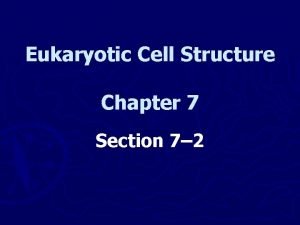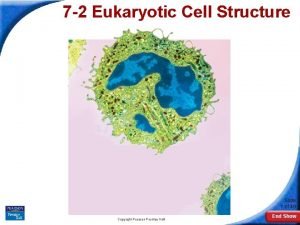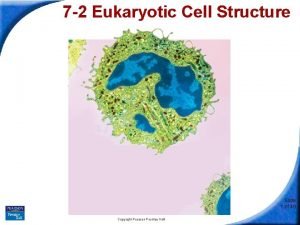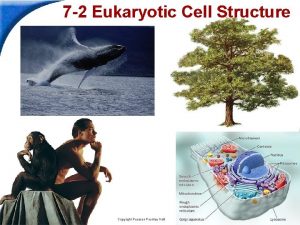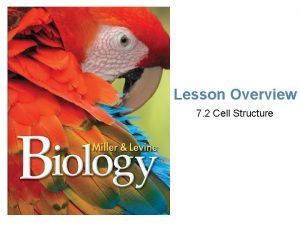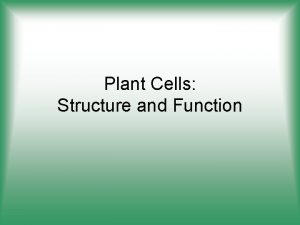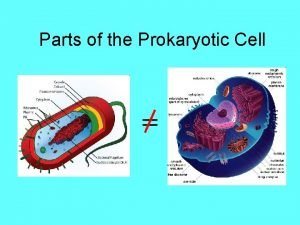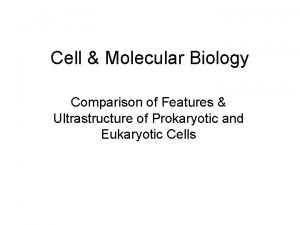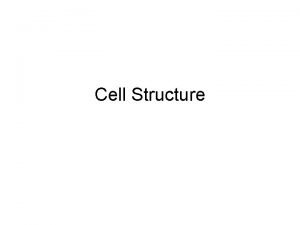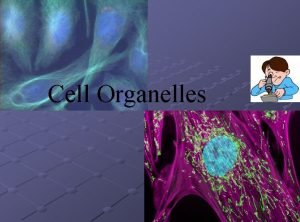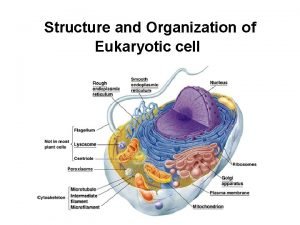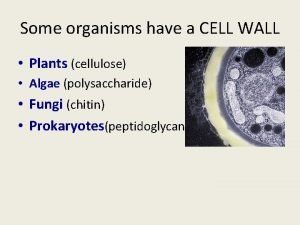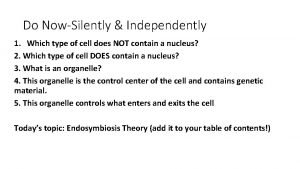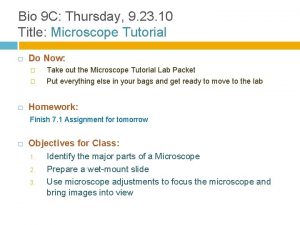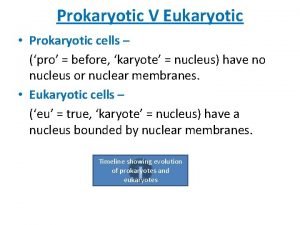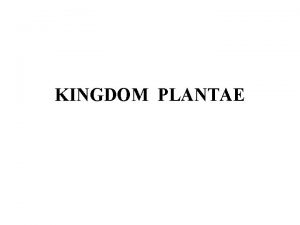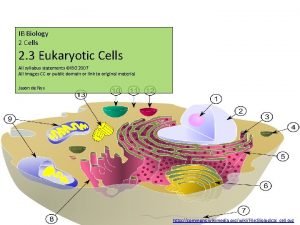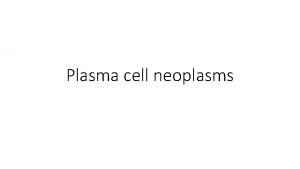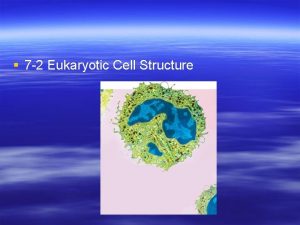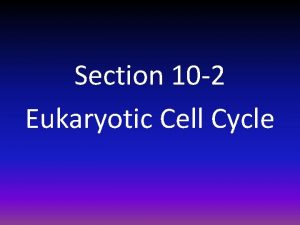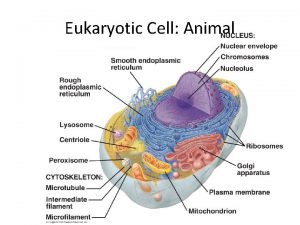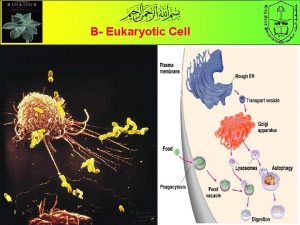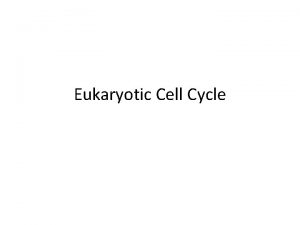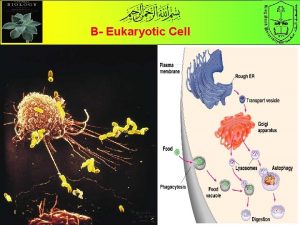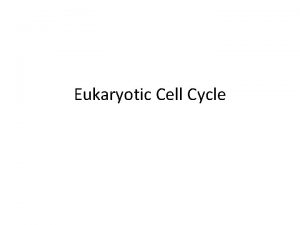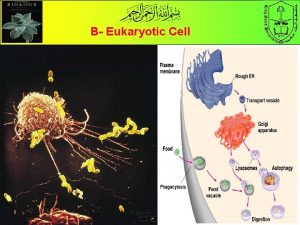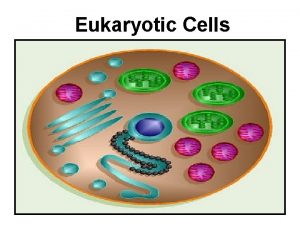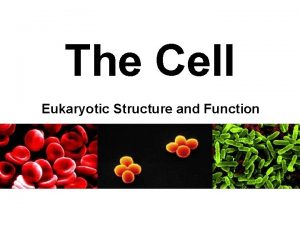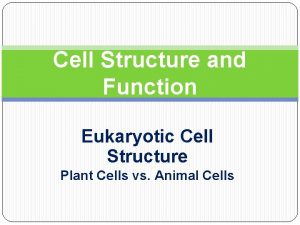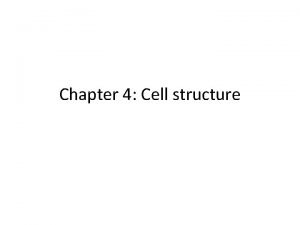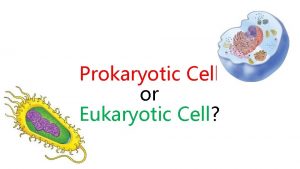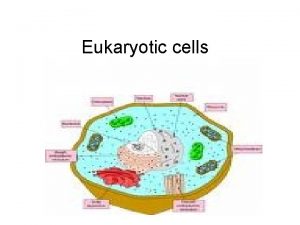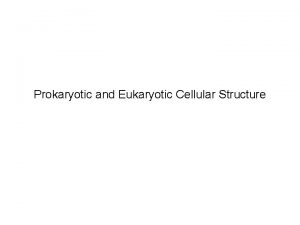Chapter 7 Section 3 Eukaryotic Cell Structure Plasma

























- Slides: 25

Chapter 7 Section 3 Eukaryotic Cell Structure

Plasma Membrane • Flexible, selectively permeable boundary around cell and organelles

Cell Wall • Rigid structure outside of cell membrane that provides support. • Bacteria, fungi, plant cells

Nucleus • Controls the cell functions. Directs the making of protein.

Chromatin • Strands of DNA that condense to form chromosomes

Nucleolus • Makes ribosomes.

Ribosomes • Not bound by membrane. • Site of protein production.

Cytoplasm • Clear jelly like fluid inside of cell.

Endoplasmic Reticulum • Site of cell chemical reactions.

Rough Endoplasmic Reticulum • RER – studded with ribosomes, this is where proteins are made.

Smooth Endoplasmic Reticulum • Contains no ribosomes. Lipids are made and stored here.

Golgi Apparatus • Modifies proteins then packages them into vesicles to be sent out of the cell.

Vacuoles • Plant cells contain large storage vacuoles. Animal cells usually have small vacuoles or none at all.

Lysosomes • Lysosomes digest cellular waste products such as worn out cell part and food, as well as bacteria and viruses

Lysosomes

Chloroplasts • Convert light energy from the sun into chemical energy in plant cells.

Plastids are organelles that store starch, lipids or pigments. Chloroplasts are plastids that contain chlorophyll, a green pigment that traps light energy.

Chloroplast Structure

Mitochondria • Provide energy for the cell

Cytoskeleton • a moving structure • maintains cell shape • helps cell to move (using structures such as flagella and cilia) • helps substances move within the cell • cellular division

Cytoskeleton Structure • Cytoskeleton is made up of microtubules (hollow) and microfilaments (solid)

Centrioles • Found in animal cells. • Play role in cell division.

Cilia • Short, numerous hair like structures that help cell to move.

Flagella A whip-like organelle that many unicellular organisms use to move.

Flagella
 Distinct threadlike structures contain genetic
Distinct threadlike structures contain genetic Eukaryotic cell
Eukaryotic cell Section 7-2 eukaryotic cell structure
Section 7-2 eukaryotic cell structure Mitochordrion
Mitochordrion Site:slidetodoc.com
Site:slidetodoc.com Prokaryotic cell and eukaryotic cell similarities
Prokaryotic cell and eukaryotic cell similarities Prokaryotic cell and eukaryotic cell
Prokaryotic cell and eukaryotic cell Eukaryotic cell animal cell
Eukaryotic cell animal cell Ghonarea
Ghonarea Cell structure
Cell structure Biology chapter 7 cell structure and function
Biology chapter 7 cell structure and function Eukaryotic plant cells
Eukaryotic plant cells Chapter 7 cell structure and function section review 7-2
Chapter 7 cell structure and function section review 7-2 Parts of a eukaryotic cell
Parts of a eukaryotic cell Typical eukaryotic cell
Typical eukaryotic cell Eukaryotic cell organisation
Eukaryotic cell organisation Differences between prokaryotic and eukaryotic
Differences between prokaryotic and eukaryotic Eukaryotic cells
Eukaryotic cells Protien pump
Protien pump Eukaryotic cell
Eukaryotic cell Are cell walls prokaryotic or eukaryotic
Are cell walls prokaryotic or eukaryotic Plant cell
Plant cell Organelle speed dating
Organelle speed dating Prokaryotic and eukaryotic difference
Prokaryotic and eukaryotic difference Algae classification
Algae classification Ib biology eukaryotic cell diagram
Ib biology eukaryotic cell diagram
